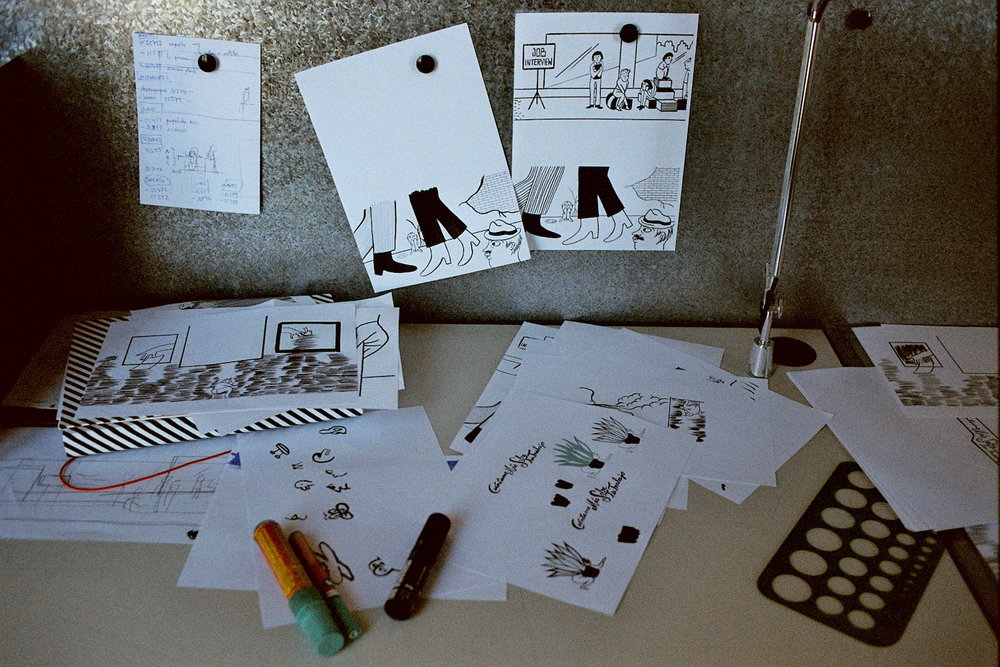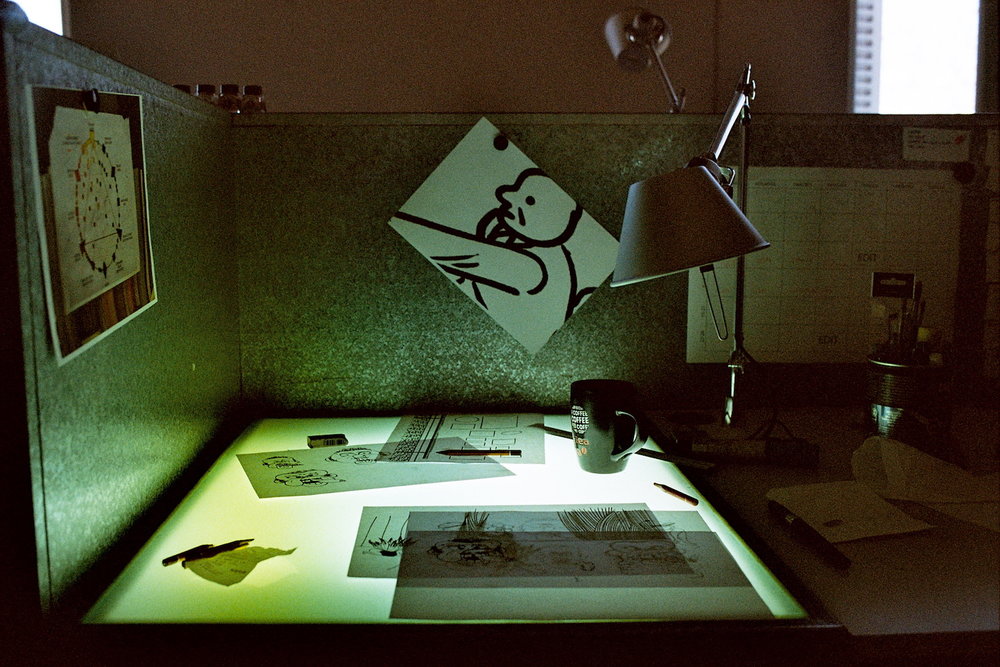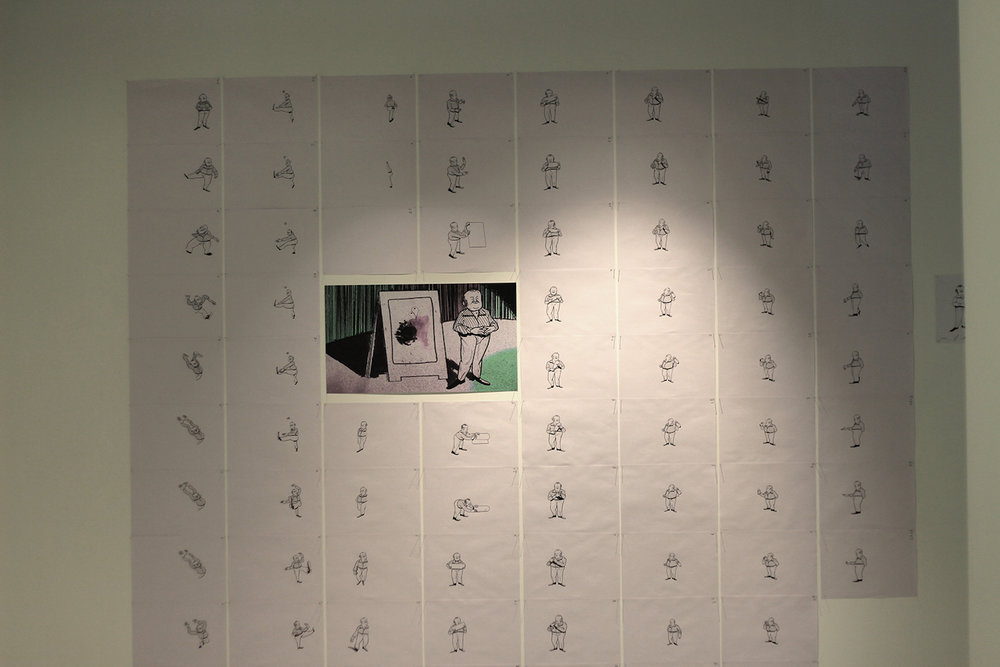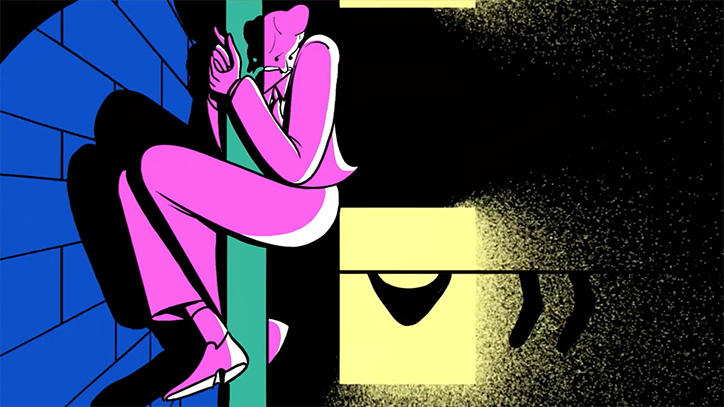Animator Genís Rigol Alzola tells stories through vividly surreal animations. Wildly experimental, the animator pieces together eye-catching and colorful worlds with imaginative narratives as creative accomplices. But there’s another film element punctuating his visuals — the incorporation of abstract sound design.
Rigol’s animation, Irudika was his first animated film where he stepped into the role as sound designer (with support of sound design expert and colleague, Pau Anglada). Purposed to convey emotion, the sound design is a driving force behind every action, creating a unique personality for each character — distinguishing protagonist from foe.
As sound designers ourselves, we’re in awe of Rigol’s distinct vision and ear for great sound composition. His videos consistency chosen as Vimeo Staff Picks, we reached out to learn more about his creative process and how he approaches sound design in video. Read on and watch more of Rigol’s work below.
Marmoset: What drew you to animation as a medium and what inspires you to create?
Rigol: I’ve always liked watching movies, reading books and comics. I also like looking at paintings and buildings; getting out of myself for a bit and seeing experiences from the perspective of others. For a while, I wrote quite a lot but I got stuck fast, as it felt like I was saying the same over and over—I didn’t like how my writing sounded.
M: A lot of your work feels contextually abstract, even the transitions kind of make everything feel so fluid, moving the narrative with ease. Can you offer us a glimpse into your creative process?
Rigol: I guess what works for me is having a necessity to form an idea. This is the big secret: sit down and write. It can be a nightmare for a while, but it will always come around. It’s always easier when I work with people, then it’s almost just saying stupid things one after the other and after a while, somehow we have a starting point. It’s making the idea into something that’s the difficult part—during the process I never know if the idea is actually good; some things can only be recognized once the work is finished.
What works for me though is reading. Lately, I’ve been reading theatre since it’s more aligned with what I want to write. But reading the plays feels like I’m being rude to the writer—as these texts are written down to be acted out rather than being read as text.

The other approach is to pay attention to reality, although this isn’t easy to practice. I used to carry around a small notebook to write down the things I see. But honestly, most of the time I open the notebook and read what I wrote, I ask myself what was I thinking. In the instance an idea stays with me for enough time, I’ll then start developing it further.
Generally, I can’t finish the story with just a script. Instead, I need to work on the storyboard and the animatic then slowly understand what I want to say. To be honest, my stories may be only be excuses to do some experimentation with visuals. I’m trying to improve this lately and give more importance to the stories, but writing well is very difficult.

M: How would you characterize your animating style?
Rigol: I feel like I’m still looking for my style, but a lot of my friends who used to draw have a similar look. I think this kind of thing is easier to identify from an outside perspective. I’ve collaborated with many talented people like Olga Capdevila, Marc Torices, Pau Anglada, Martí Sawe, Irkus Zeberio, Maite Caballero or Alexis Nolla among many others, and I’ve adopted a lot from all of them. Oftentimes I’m scared my drawings look like other people’s drawings.
Animation is a long and slow process, which can be very boring at some point, that’s why I like to draw in different styles and switch from one to the other in relation to the story. But sometimes this can cause you to get lost in it and get distracting.
I draw on paper as much as I can, especially at the beginning of a process. I’m a bit obsessed with learning so I try to practice in different ways, sometimes I work on life drawing, or compose on color and abstract, sketch from the mind, or work on comics. I try to do as many different exercises as I can. I never really like what I end up having but while I’m doing it, I enjoy the practice. For a while I studied quite a lot of life drawing, paying attention the aspect of depth. I recommend this a lot, especially if you are in 2D animation.

M: Your animations’ sound design packs a punch. How do you approach creating sound to picture?
Rigol: The last animation I released Irudika, is the first project I’ve done the sound on my own. The reason for this was that there was no budget for it, but I couldn’t have done it without Pau Anglada, he helped a lot with the sound design. It was really fun and exciting and I would love to do more music and sound in the future. The only rule we had was not to use stock sounds, try to record our own original sounds and not be very literal on the action. For the voices we worked with some synths, as we didn’t want to have regular voices as working with actors can be expensive. We wanted all of it to sound like some kind of weird nightmare. I also try to get into the mind of each character to imagine what’s going on internally.

Genís Rigol, Pau Panglada and Marc Torices: Gutter Fest: The Movie (still)
Sound is very powerful and can change a lot a visual’s mood; I keep this in mind so it doesn’t hurt the animation. While I was new to doing sound design on this film and my knowledge is very limited, I think it improved the animation overall, even if it made the video a bit darker and dreamier.
M: What’s a project you’re super proud to have created? And what do you have in the works next?
Rigol: I’m proud of all the projects I’ve done without a big budget, like Gutter Fest: The Movie, Irudika or Blanc Festival. Right now I’m working on a six-minute short-film but since I’m working solo on it, the process feels too slow.
M: What do you think is the most rewarding thing about being an animator?
Rigol: As my beloved Aggie Pak Yee Lee said when she was asked the same question in Sundance: “My favorite part is when it’s done!”
Check out more of Genis Rigol Alzola’s work here. Have an animation or video you need some sound design help on? We’ve got you covered, get in touch with us here — let’s make it sound great together.
